We use cookies, including cookies from third parties, to enhance your user experience and the effectiveness of our marketing activities. These cookies are performance, analytics and advertising cookies, please see our Privacy and Cookie policy for further information. If you agree to all of our cookies select “Accept all” or select “Cookie Settings” to see which cookies we use and choose which ones you would like to accept.
Buying Guides
Air Conditioner Buying Guide
Air conditioning units are an essential piece of kit for homes and businesses in hot and changeable climates. At LG, we have a wide range of air conditioners for the home, as well as industrial systems for commercial use. We’ll explain each of these types in more detail below, and look at the size, efficiency and features of our residential AC units, too.
Types of Air Conditioners
Whether you’re looking for a new AC for your home or business, we have a variety of different types to choose from.
Air Conditioners for the Home
These air conditioning units are designed for residential use.
Split System Air Conditioners
Split system air conditioners are ductless and made up of two parts: an outdoor compressor unit and an indoor unit. Hot air is absorbed by refrigerant gas from inside through a pipe connecting the two units; the outdoor unit then releases the heat and pumps the cold refrigerant back into the indoor unit, cooling the space.
Split system units are usually used to cool one or an open plan area of up to 60m2. Our split system air conditioners are reverse cycle models, which means that they can also heat your home in winter with the flick of a switch.
Heating mode is just reversed process of cooling mode: the unit draws heat in from the heatpump (outdoor), and releases this into the room. Compared to conventional heaters that are not reverse cycle heaters, such as gas heaters or wood heaters whereby the heat energy is created, reverse cycle air conditioners absorb heat by exchanging coil and pump to warm the air indoors.
Benefits of Split System Air Conditioning
Split system ACs are popular in Australia – and for good reason. Here are just some of the plus points:
• Split system air conditioners are generally more energy efficient
• They’re typically cheaper to run than conventional ACs
• They operate quietly
• Although they will need to be professionally installed by a licensed LG Specialist Dealer, installation is relatively straightforward
• Once they have been installed, you’ll find that they’re fairly low maintenance; they’re easy to clean, and you’ll only need to clean the filter every month or so.
Ducted System Air Conditioners
Ducted system air conditioners are also suitable for home use. These ACs consist of a central unit – which is usually located somewhere discrete and out of sight, like a roof – and connected by ducts to air outlets and sensors in each room. They come with a control panel to set target temperatures, so they’re a good way to cool a whole house.
Ducted air conditioning is ideal for controlling the temperature of a larger home, and they may be suitable for some offices too. To install this kind of system, you’ll need to make a few modifications to your home, so you should take this into consideration before buying.
Multi-Split Systems
Multi-split air conditioners are similar to split system units, except that they have one outdoor unit connected to two or more indoor units. This type of AC is good for two or three rooms that are fairly close together – particularly if separate split systems or ducted air conditioning isn’t suitable for your home (if space is limited, for example).
AWHP
Air to water heat pump (AWHP) systems are highly efficient to operate, allowing you to cool or heat a space – including the floor – and heat your hot water supply with additional tank. You can install these systems in new builds, or replace the boilers in your existing home. The LG THERMA V air to water heat pump system uses 75% of natural energy absorbed from outside air; the remaining 25% comes from electricity. This significantly reduces Co2 emissions, compared to oil or gas boilers, and is a sustainable solution for modern homes.
Air Conditioners for Larger Spaces & Commercial Use
1: Sort your laundry
If you’re in the market for a new AC for your business or workplace, we can help: at LG, you’ll find air conditioning systems in store that are suitable for large or open spaces.
2: Select the right wash cycle and temperature
When setting a wash cycle and temperature for a particular load, you’ll need to think about how soiled those garments are, and the fabrics that these garments are made from. If you’re washing delicates versus something made from cotton (which can usually withstand higher temperatures), you’ll need to select a gentler cycle at a cooler temperature.
Warm washes are better for moderately or even heavily soiled items, but you should always pre-treat stains if you’re washing clothes that are visibly dirty. Hot washes can be used to sanitise garments and kill bacteria, so these cycles are better for towels and bedding; you can also wash sturdy fabrics or very soiled items on hot washes, providing that you’ve read the care label and know that they can cope with high temperatures.
Ceiling Mounted Cassette
Ceiling mounted cassette air conditioners work well in any number of commercial spaces, because they fit discretely into the ceiling and are generally more powerful than wall-mounted units. They’re also quiet, so they’re suitable for offices or anywhere else where noise should be a consideration. Our indoor cassette units also filter the air for a fresher, cooler space.
VRF
VRF (which stands for Variable Refrigerant Volume) is a type of air conditioner that’s also widely used in commercial buildings, spacious homes or high-rise apartments. It’s similar to a multi-split system, but VRF units are much bigger and can connect to more indoor units. This type of air conditioning system can be the more efficient to operate, because it circulates less amount of refrigerant than multi-split system units needed during a heating or cooling period. This means you can individually control different air conditioning zones at one time.
What Size Air Conditioner Do I Need?
One of the key things you’ll need to think about when buying an air conditioner for your home is sizing (or capacity), which is measured in kilowatts (kW).
If you choose an air conditioner that’s too powerful for a room based on its size, the unit will likely run lots of short cycles to reach the right temperature. This may result in the room being too hot or too cold; additionally, you may find that the room doesn’t dehumidify, which means the air won’t be dry enough, so it’ll be uncomfortable to be in. Overpowered models will also use more power and may experience greater wear; resulting in unnecessarily running and maintenance costs.
Alternatively, if you get something that’s too small (or not powerful enough) for a particular room, you may find that the unit dries the air out too much – which, again, will be uncomfortable. What’s more, you’ll find that the unit may need to run more often at maximum power, which will also lead to premature wear and tear.
As a general rule of thumb, you’ll need at least 1 to 1.5 kW of cooling capacity for every 10m2 of floor space. To calculate the floor space, multiply the length of the room by the width. You may also need to factor in the height of the space that’s available, since rooms with high ceilings can require more power to cool.
As well as room size, you should also consider the following:
• Windows and doors: think about the size and orientation of any windows and glass doors in the room. North- or west-facing windows can let in a lot of heat in the summer, for example, whilst rooms with southern-facing windows will be cooler.
• Insulation: are the floors, ceilings or walls insulated? Heavily insulated spaces will be warmer – and require less cooling – than poorly insulated rooms.
• Your location: is your hometown hot and tropical or is the weather milder? A room in North Queensland will require a more powerful air conditioner than a similar room in Tasmania, for example.
At LG, you’ll find 2.5kW and 3.5kW split system units, which are ideal for small- or medium-sized rooms measuring up to 40m2. We also have larger air conditioners for rooms measuring 60m2 or more; you’ll find 7kW split system units and powerful enough for living room type of open area, ducted air conditioners with capacities of 15kW, 18kW and even 20kW.
Features on Selected LG ACs
Our air conditioners come with a range of handy features that are designed to improve the day-to-day usability of the unit, as outlined below.
ThinQ®
Selected air conditioning units use LG ThinQ® technology, which allows you to remotely monitor and manage your AC via your smartphone app, and troubleshoot any issues you may have. You can also check your energy usage, including your monthly or weekly usage, via the app.
You’ll notice that some of our air conditioners have built-in Wi-Fi and are compatible with Google Assistant and Amazon Alexa, too. You can turn on the AC or check the temperature using only your voice with this handy feature!
Smart Inverter Compressor™
Selected split system air conditioner models come with the Smart Inverter Compressor™. The Smart Inverter Compressor limits unnecessary noise, meaning these air conditioners operate more quietly; you won’t get a sudden increase in sound when the AC goes from just having its fan on to cooling your space, for example. What’s more, this type of compressor adjusts its speed to maintain the desired temperature, so these air conditioners work more efficiently, too.
Our Smart Inverter Compressor™ is designed to handle high temperatures, so it’s ideal for warmer climates like those found in Australia. It can run at variable speeds, making it more efficient for changeable temperatures, and can adjust its output based on its surroundings.
Ready to Buy a New Air Conditioner?
Chill out at home or improve the quality of your workspace with an air conditioning unit from LG. Browse the full range of Air Conditioners online now and find the right one for you.
Life's Good!
Featured product
- Newest
- Most Popular
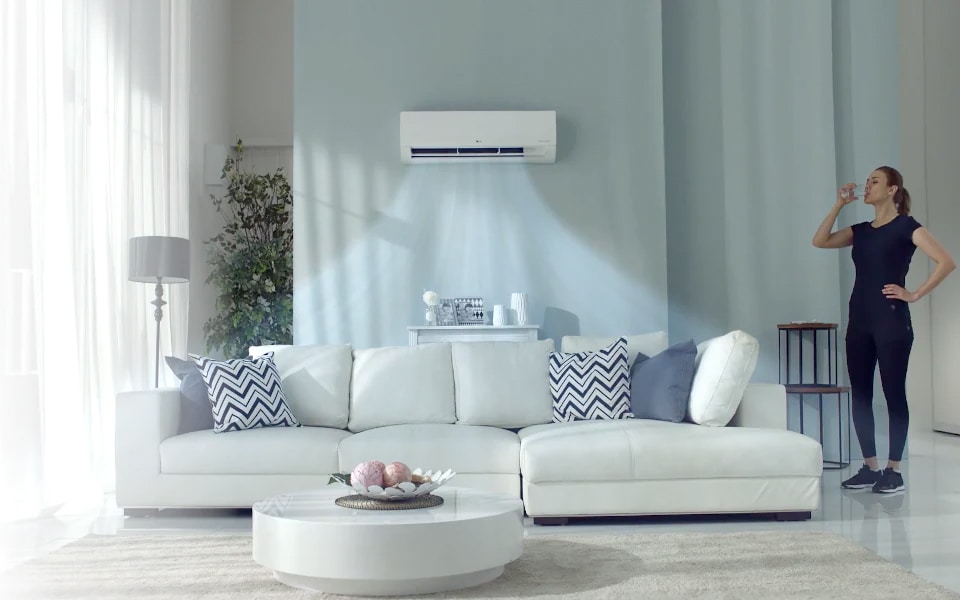
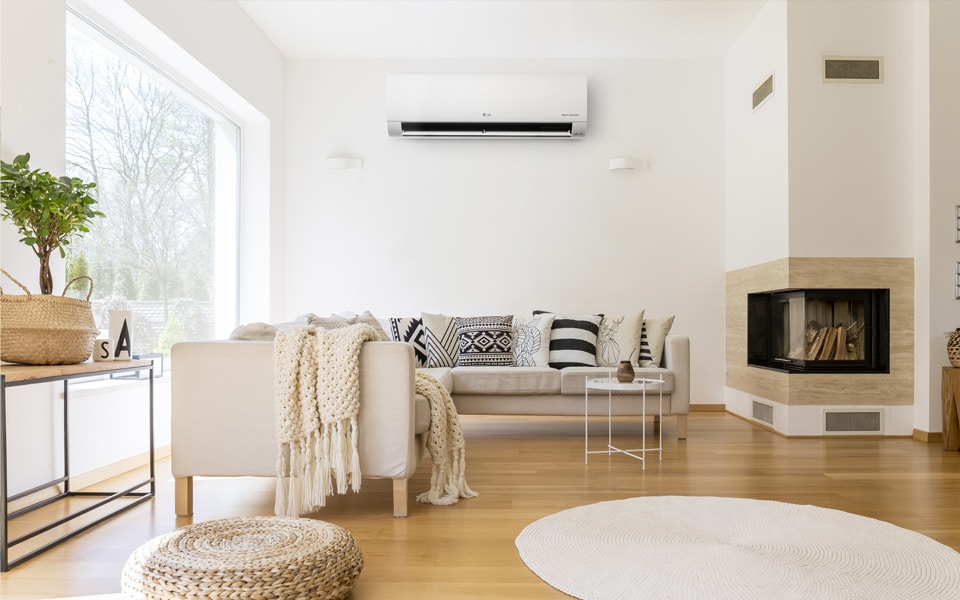
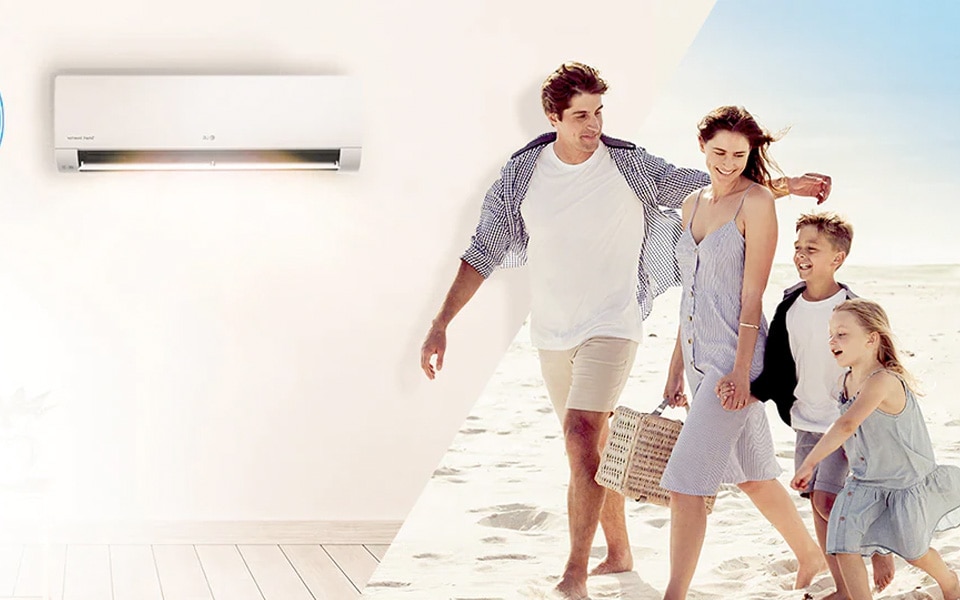
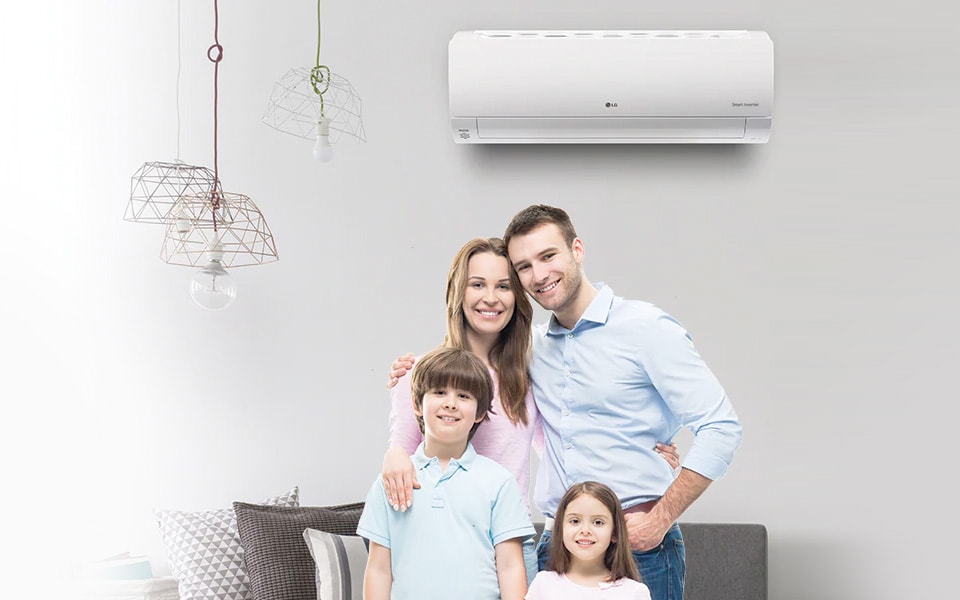
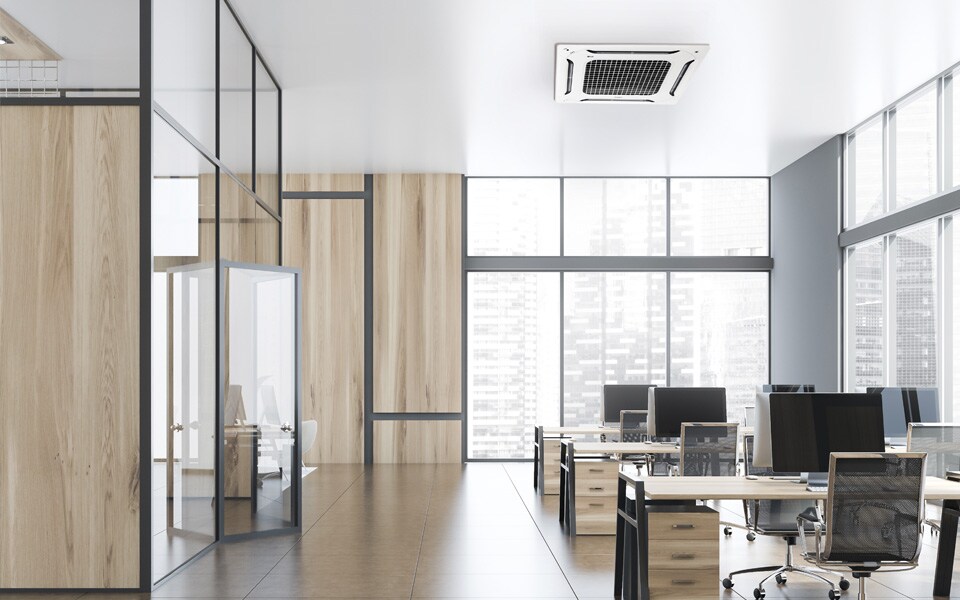
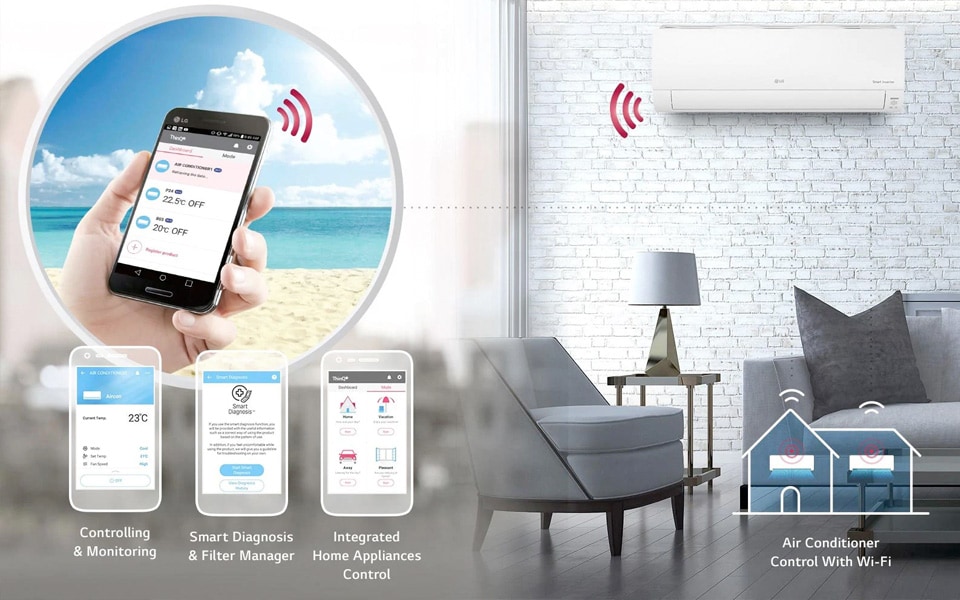
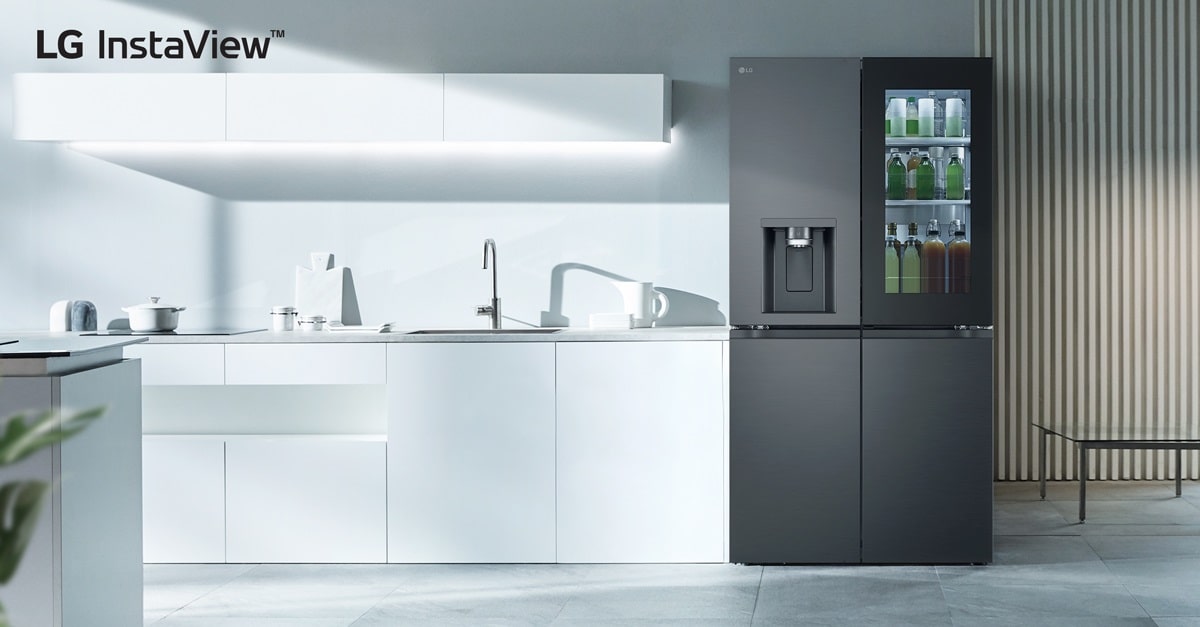

.png)